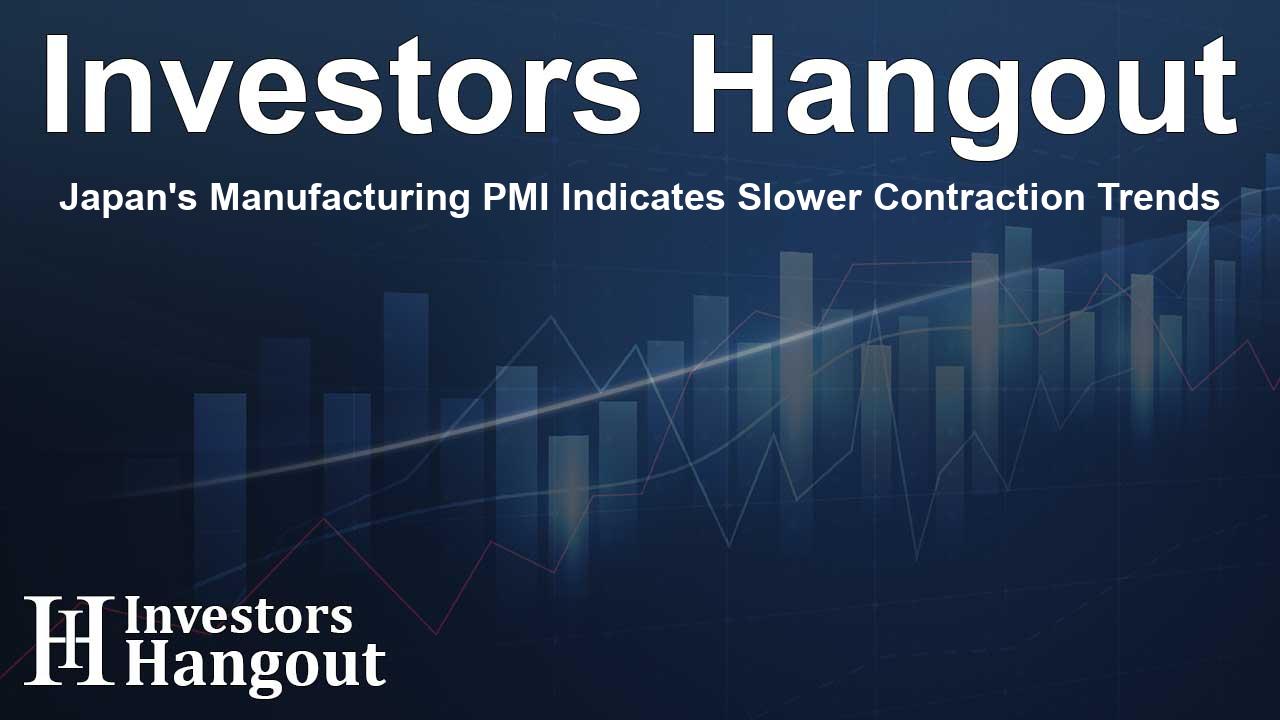Japan's Manufacturing PMI Indicates Slower Contraction Trends

Japan's Manufacturing Activity Shows Signs of Resilience
Japan's factory activity is demonstrating a slower rate of contraction as recent data reveals easing in production and new orders. This shift suggests the nation's manufacturing sector is gradually moving towards stabilization, a positive note amidst prior declines.
Deciphering the PMI Numbers
The final au Jibun Bank Japan manufacturing purchasing managers' index (PMI) recorded a rise to 49.6, reflecting the least contraction in three months. Although this is a marginal improvement over the previous month's figure of 49.0, it remains below the critical threshold of 50.0 that distinguishes expansion from contraction. This consistency beneath the neutral mark has persisted for six consecutive months.
Insights from the S&P Global Analysis
According to Usamah Bhatti from S&P Global Market Intelligence, the PMI reading is indicative of a movement closer to neutrality, primarily driven by milder reductions in both production levels and new order inflows. The subtleties within the numbers suggest a cautious optimism as manufacturers adjust to ongoing market conditions.
Production and New Orders Falling but Stabilizing
Despite the resilience indicated in the PMI figures, the subindex for production continues to exhibit contraction, marking its fourth consecutive month of decline in December. However, the rate of this contraction has shown signs of slowing, an encouraging trend for manufacturers who have faced persistent challenges stemming from subdued new order activities.
Demand Pressures from Diverse Markets
New orders have now contracted for 19 consecutive months, driven primarily by weak demand from both domestic channels and significant overseas markets. A common sentiment among firms is that difficulties within the semiconductor market have contributed to the current downturn in new order volumes.
Employment Trends and Workforce Adjustments
A bright spot in the latest survey is the expansion in employment levels during December, a rebound from the previous month's declines. The uptick in workforce numbers was attributed to labour shortages, with companies taking proactive steps to prepare for potential increases in demand moving forward.
Pressure from Rising Costs
Manufacturers are currently facing the strongest input price growth seen since August, attributed to escalating costs of raw materials and rising labour expenses. The depreciating yen is also compounding inflationary pressures. In response, firms have instituted price hikes on their outputs at the swiftest pace observed in the last five months.
Future Outlook for Japanese Manufacturers
Despite the struggles, manufacturers express optimism regarding future prospects. The anticipation is buoyed by the upcoming launch and mass production of new products, which could ultimately lead to an expansion in business activities, providing a potential lifeline for the sector.
Frequently Asked Questions
What does a PMI below 50 signify?
A PMI below 50 indicates that the manufacturing sector is contracting rather than expanding.
How does the input price increase affect manufacturers?
Higher input prices can reduce profit margins for manufacturers unless they are able to pass these costs onto consumers through price increases.
What factors contribute to the contraction in new orders?
Weak demand in both domestic and international markets, particularly influenced by the semiconductor sector, has led to a decline in new orders.
Why is employment increasing in the manufacturing sector?
Employment is rising due to labour shortages and companies preparing for anticipated demand increases.
What are manufacturers' expectations moving forward?
Manufacturers are hopeful about future growth due to new product launches and mass production efforts which may stimulate demand.
About Investors Hangout
Investors Hangout is a leading online stock forum for financial discussion and learning, offering a wide range of free tools and resources. It draws in traders of all levels, who exchange market knowledge, investigate trading tactics, and keep an eye on industry developments in real time. Featuring financial articles, stock message boards, quotes, charts, company profiles, and live news updates. Through cooperative learning and a wealth of informational resources, it helps users from novices creating their first portfolios to experts honing their techniques. Join Investors Hangout today: https://investorshangout.com/
Disclaimer: The content of this article is solely for general informational purposes only; it does not represent legal, financial, or investment advice. Investors Hangout does not offer financial advice; the author is not a licensed financial advisor. Consult a qualified advisor before making any financial or investment decisions based on this article. The author's interpretation of publicly available data shapes the opinions presented here; as a result, they should not be taken as advice to purchase, sell, or hold any securities mentioned or any other investments. The author does not guarantee the accuracy, completeness, or timeliness of any material, providing it "as is." Information and market conditions may change; past performance is not indicative of future outcomes. If any of the material offered here is inaccurate, please contact us for corrections.